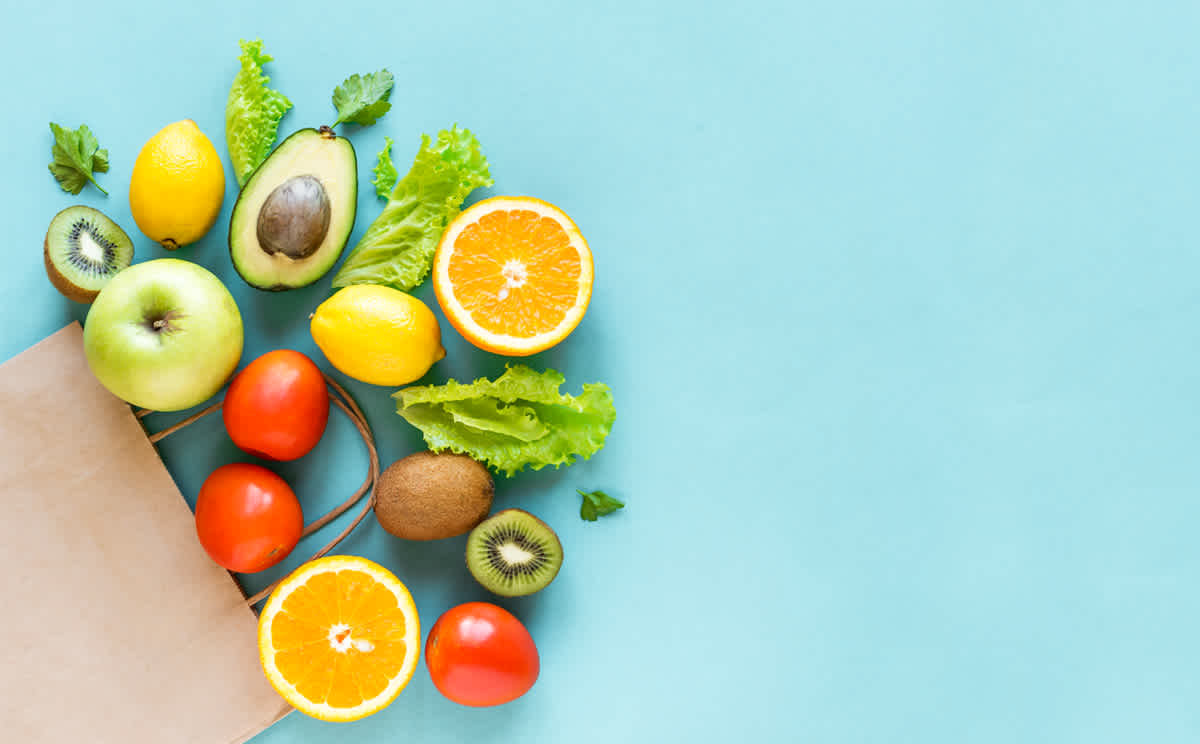6 reasons to invest in food
Keytrade Bank
keytradebank.be
August 31, 2024
3 minutes to read
The food industry offers many opportunities for investors. Read the 6 reasons why food is an attractive theme and how you can invest in it.
1. More mouths to feed
According to UN figures, the world was populated by just under 3 billion people in 1960. Now there are 8 billion. And it's not stopping there: by 2050, we’re likely to approach 10 billion. The good news? We can make lots of new friends. The not so good news? All these new friends will want to eat, too. That means more investment is needed to produce and distribute enough food for everyone. At the moment, around 367,000 children are born every day, whereas only 167,000 people die every day. This means there are 200,000 more mouths to feed every day.
2. Less agricultural land
According to the World Bank, there was almost twice as much agricultural land per person in 1961 as there is today. In 1961, there were 0.36 hectares of agricultural land per person. Today, that number has fallen to just 0.18 hectares. In other words, when a field had to feed 50 people 60 years ago, the same field has to feed 100 people today. This pressure will increase even more in the coming decades. This means agricultural land has be used more and more efficiently without depleting the soil. This paves the way for investment opportunities in companies that are developing innovative techniques and solutions to achieve this.
3. Changing nutritional needs and lifestyles
The standard of living is increasing worldwide. The average person not only lives longer, but the increasing level of prosperity is also leading to higher consumption and different eating habits. In many emerging markets, the middle class is growing rapidly, pushing up demand for a variety of high-quality food. In addition, there is an increasing focus on personalised diets, organic food, artisanal food, plant-based protein, etc. We are also ordering more and more meals by tapping a card or smartphone. We are even treating our pets to specially adapted pet food. These changing nutritional needs and consumer trends also come with investment opportunities.
4. Climate change
Climate change and extreme weather conditions are putting more and more pressure on agriculture, fisheries and water supplies. The impact of this on traditional farming methods calls for a shift towards more sustainable and innovative farming techniques. Vertical farming, precision farming and agroecology are a few developments that can make the industry more sustainable. Companies that are working on these developments offer attractive investment opportunities.
5. Food waste
According to the UN Food and Agriculture Organization, around 14% of food produced is lost between harvest and retail. After that, a further 17% ends up being wasted in retail and by consumers. According to FAO estimates, all this wasted food can feed up to 1.26 billion people each year. Initiatives to reduce these losses also come with investment opportunities.
6. Food quality
The quality of our food is a hot topic. Many ultra-processed foods are stripped of nutrients and contain excessive amounts of sugar, salt and unhealthy fats. At the same time, a higher number of consumers are becoming more aware of the link between nutrition and health, and are instead opting for natural, unprocessed and nutritious products. Companies that focus on this can count on growing demand. This shift in consumer behaviour offers attractive investment opportunities in companies that are offering healthy alternatives or investing in technologies that improve food quality.

Food: a broad and delicate investment theme
Food is an important theme, but also a sensitive one when it comes to investing. Speculators can affect the prices of essential commodities, but it is also possible to invest in food in a socially responsible way. Food is a varied investment theme. You can invest in specific sub-themes or in the entire chain, including agriculture (tools and services, fertilisation, crop protection, distribution), water (suppliers, infrastructure, irrigation, treatment), food and beverage manufacturers, food retailers, restaurants and caterers, food safety and quality assurance companies, etc.
Food is the ultimate defensive sector. Although it may not sound as snazzy as robotics or artificial intelligence, food is a future-proof investment theme. We all need to eat and drink, which makes the sector less sensitive to economic downturns. It is also a theme that intersects with other promising themes, such as technology, emerging markets, health, demographic developments and consumer trends.
How can I invest in food?
There are several ways to invest in food, for example with individual shares, trackers (ETFs) or actively managed investment funds. Which option suits you best depends on your risk appetite, knowledge of the topic and how much time you want to invest.
- Individual shares require the most homework. You select companies that are actively involved in the food theme, and you buy, sell and track these shares yourself. This strategy has the potential to generate high returns, but it also entails a higher risk of loss – especially if you only invest in a few shares. This is why it is essential that you do your research and spread your investments across a range of shares.
- Trackers or ETFs track an index of shares related to the agricultural and/or food industry. By investing in a tracker, you can indirectly invest in dozens of companies that are active in your chosen field in one go, without needing to select individual shares. One advantage of this approach is that it takes less time to manage. The disadvantage is that a tracker tends to track all the companies in the index without making any distinction between 'good' and 'bad' companies.
- Investment funds also invest in a basket of shares involved in the theme, but they do so in a more active way. This means there is a manager who makes a selection and tries to separate the wheat from the chaff. The disadvantage is that this active management comes at a slightly higher cost than a tracker.
Looking for food trackers or funds?
1. Log in to Keytradebank.be on your laptop or desktop 2. Click on Advanced at the top, next to search by instrument name, symbol or ISIN 3. Tick Tracker and/or Fund


